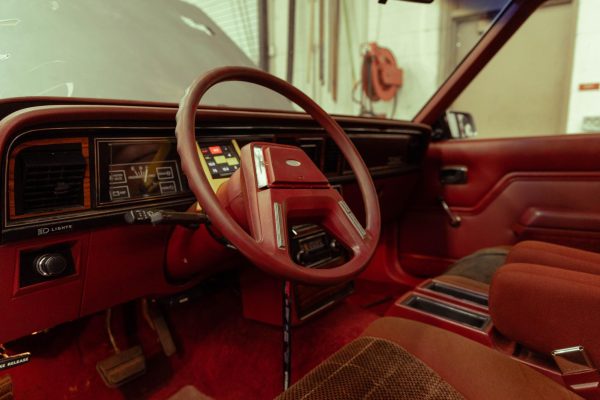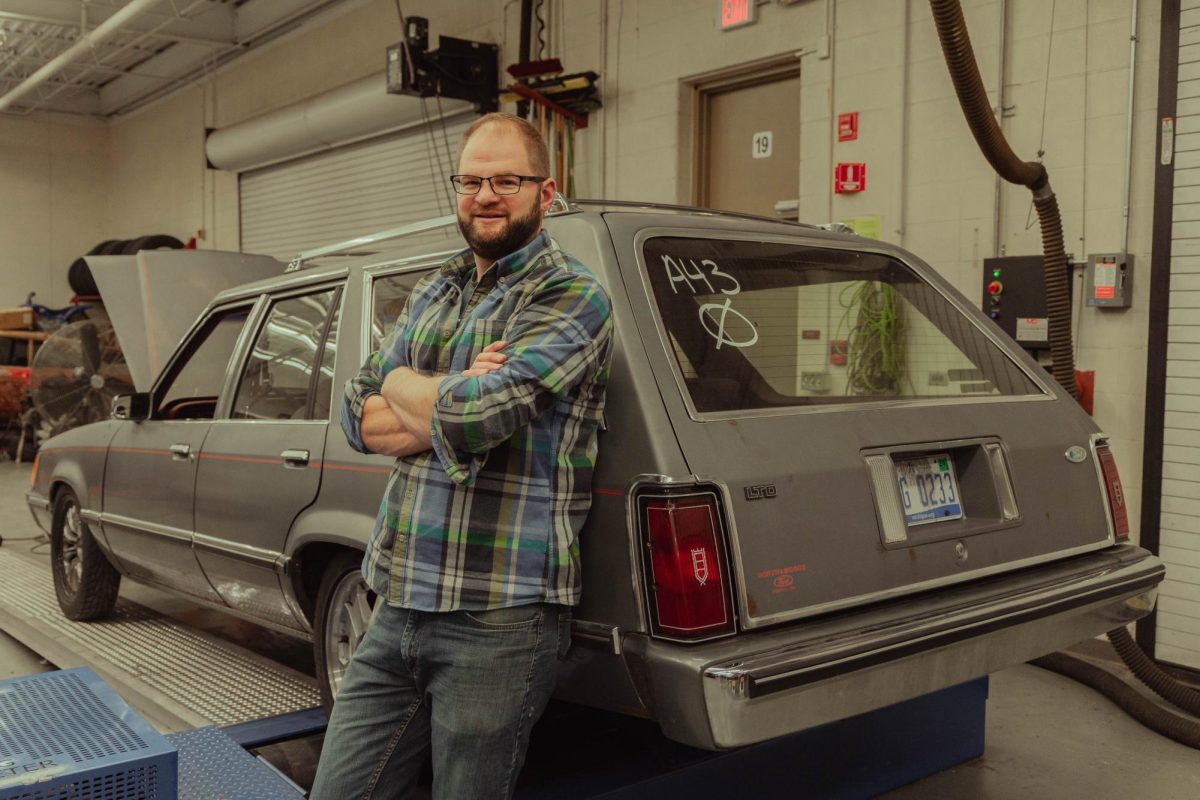Putting hours of research, manual labor and money into a vessel to race and travel in is something straight out of a sci-fi movie, but automotive enthusiasts bring this concept to life constantly.
Chris Feid is an automotive teacher at Central. His classes are very hands-on as one could imagine, but he also has a unique way for students to demonstrate their understanding —an old car.
The 1983 Ford LTD was a flagship model in Ford’s line of family four-doors, dubbed “limited” due to their slightly more luxurious trim only available previously in Lincoln and Mercury vehicles.
Many people would have no interest in an old and unspectacular car, but Feid had a vision for it after seeing one on Facebook Marketplace. The vision, though, was not within his personal budget.
One friend, whose name Feid declined to share, was willing to assume the risk of students working on his car and agreed to pay for the parts if Feid could provide the labor.
“It was your basic family wagon at the time,” Feid said. “He just wanted something a little bit faster.”
Finding candidates to help take on the challenge was simple considering what the auto shop has to offer. Two auto shop regulars are seniors Drew Lifka and Mikolaj Rychlicki.
“You have all the tools,” Lifka said. “And someone who knows what they’re doing,”
Feid and his friend settled on an LS truck engine from a junkyard. It’s nothing special in terms of speed when placed in a heavy, torque-optimized metal pickup, but in a much lighter chassis it might as well be a jet engine.

The friend funding the project bought a turbocharger—or turbo—to force more air into the engine and create even more power, crossing the threshold of speed that a naturally aspirated engine might reach.
The turbo that eventually went in to the LTD is 78mm, which is fairly large turbo. This size may take a long time to take effect on acceleration from a dead stop—or more specifically it takes time to “spool up”, but it offers the potential for seriously intense acceleration once it does.
After two years of work, Rychlicki took the Frankensteinian car for its first test drive, and was reminded that there was still work to do.
“I was driving it and it overheated,” Rychlicki said. “[It] spit all the coolant out onto the parking lot.”
It’s now been three years, and after the most recent machine testing the wagon made 620 wheel horsepower, a number usually reserved for supercars—not your everyday family wagon.
This car, and more broadly Feid’s class, has offered more than just a grade or a credit, it’s hands-on job experience.
“I see it is a class that really teaches you how to involve yourself outside of school,” Lifka said. “You can come back to school and show your knowledge like a job.”
For Feid, it’s more about bringing kids together and watching them pass down the torch of responsibility that comes with the car.
“It’s kind of cool seeing it come together over three years,” Feid said. “A group of kids will work on it. They graduated and another group of kids took over, and moved the project further and further.”
Feid thinks he will finish work on the Ford wagon this summer, but finds it likely that there will be another project to replace it soon enough that another community can form around it.
“[The groups of kids] had the opportunity to work together and get to know each other,” Feid said. “It brought them together.”





